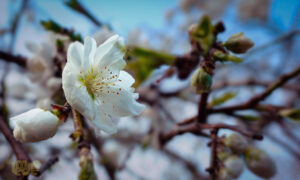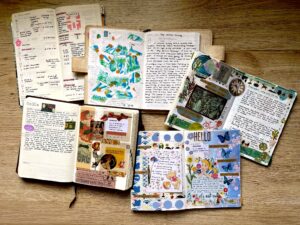A Journey of Healing Through Noh
words and photos by Mariz Jean Solano
Like everyone else, 2020 was a very challenging year for me. I was stranded in the Philippines for many months before I was able to return to Japan again. When it finally opened, I had a hard time looking for a new job. When I finally found one, I contracted COVID. I can’t forget losing my sense of smell and thinking of dying alone in a foreign country. I know that I still feel the pain caused by those painful memories.
There are many conspiracy theories about the origin and future of the pandemic. My main concern is, “How do we truly heal from this situation?” I think I started losing my confidence and feeling more scared of many things because of its aftermath. I mustered the courage to find ways to pick up my disengaging body and spirituality.
Interestingly, living in Kansai gave me a surprising idea: join a Noh theater summer class!
Noh theater is known as Japanese traditional theater arts. It’s more than a performance, it’s an offering to the gods. Ancient Japanese created and passed this sacred form of art to their next generations.
Usually, Noh actors need years to work on their craft. I and my fellow international summer school students at Traditional Theater Training (TTT) center in Kyoto Art Center only had two weeks. We had very patient Noh teachers who guided us step-by-step. Every single rule made me internalize the life of ancient Japanese. I knew that I should pay attention well. After surviving COVID, I had some issues with remembering small details. I struggled in completing my piece but my wonderful senseis and supportive classmates didn’t give up on me. They were firm and encouraging, talented and appreciative. I found their passion contagious, I motivated myself to do better. I couldn’t be as great as they (experienced theater actors) are, I wanted to be better than I was when I started. I figured out that even though my brain was scattered, I could use my heart to focus. I let my feelings lead me to the right steps so I can bring color to my Noh theater piece. Gradually, I was able to memorize my chant and steps.
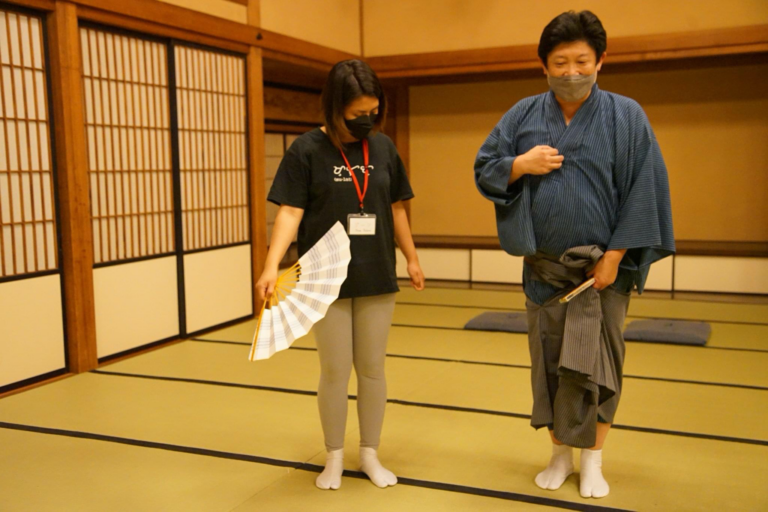
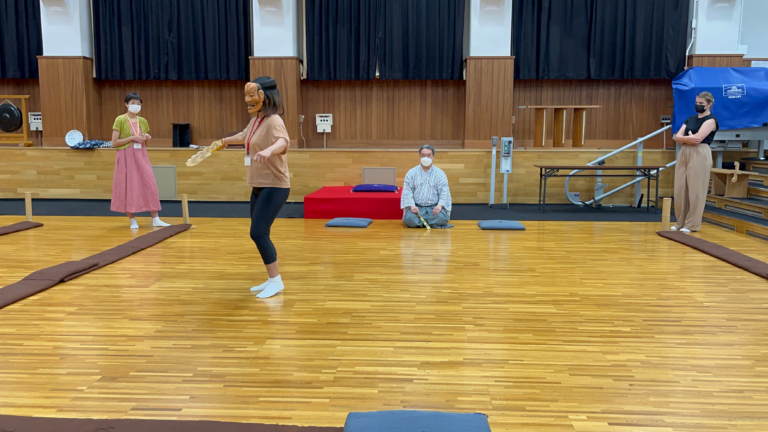
Just a few days before our recital, one of our teachers contracted COVID. It was another reminder that we can’t be too calm, we’re still in the middle of a pandemic. On the other hand, the show must go on! TTT postponed this summer school for the past two years so our comeback performance would mean a lot to every passionate being
who believes in Noh theater. We prepared everything including our antigen test on our recital day. All of us tested negative so we pursued performing on stage.
Noh theater is an extremely special place, anyone who goes inside one can sense an unexplainable feeling of spirituality. I was nervous but I was motivated to show what we worked hard to achieve. I still feel nostalgic thinking about the echo of my chant, the loud impact of my step, and the poses and movements on Noh theater stage.
True enough, it was a very sacred experience.
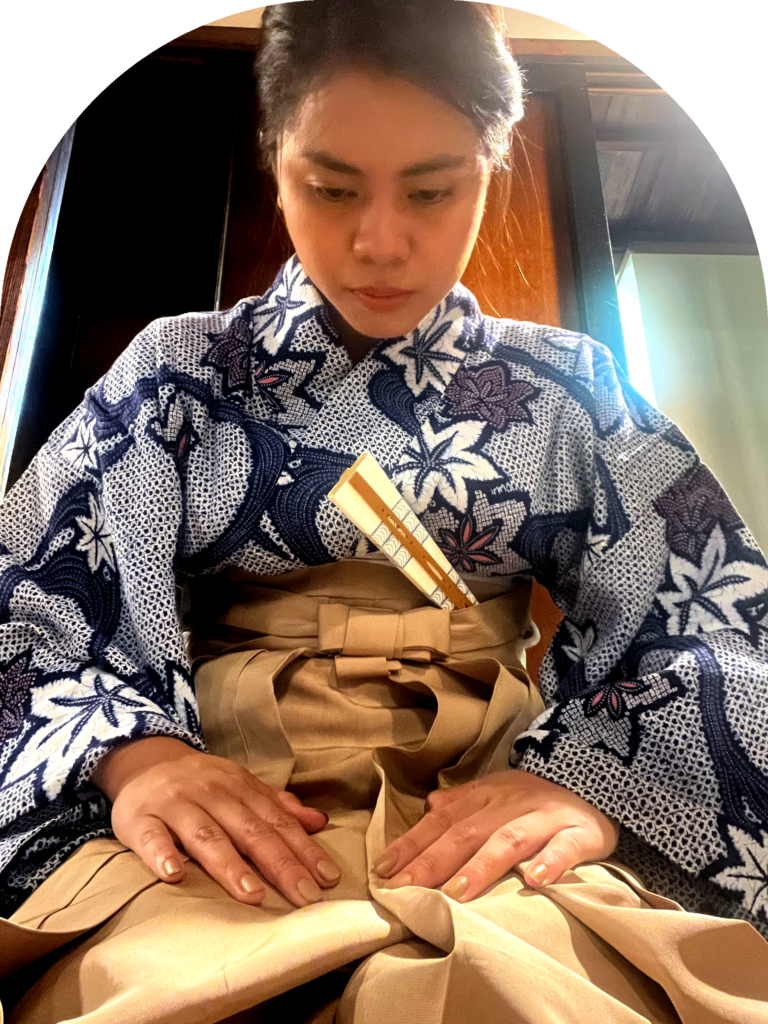
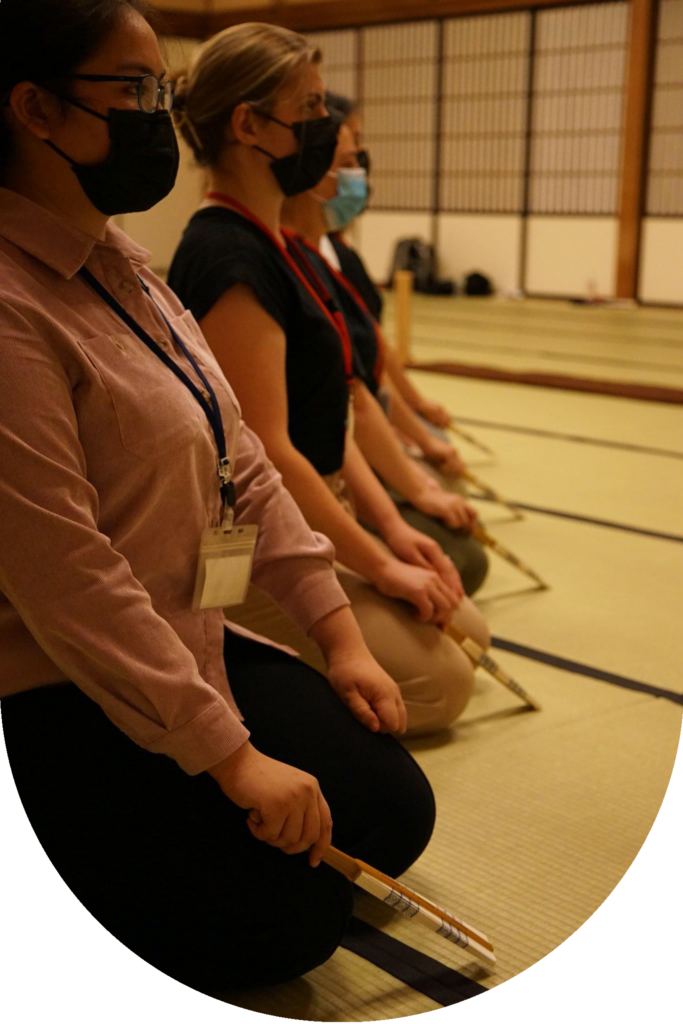
I’m thankful that I was able to learn skills to perform in a Noh theater. I respect the efforts of all people who have been collaborating to keep it alive. Modernization sometimes makes us forget the beauty of rich cultures but amidst the darkness of this pandemic era, I found a bright light and a glimmering sense of hope from traditional theater arts. We might not know what will happen next in times of uncertainty but just like what I learned from my Noh theater lessons; use your heart, follow the beat, and enjoy the moment.
Editor’s Note:
Performing is a powerful tool for some people during the pandemic, providing a sense of connection, community, and creativity in a time of uncertainty and isolation. In this article, Ms. Mariz Jean Solano talks about her experience of joining a Noh theater summer class at the Traditional Theater Training (TTT) center in Kyoto Art Center after facing various challenges in 2020, including being stranded in the Philippines, struggling to find a job, and contracting COVID-19. She shares how learning Noh theater, an ancient Japanese traditional theater art, helped her internalize the life of ancient Japanese and allowed her to use her heart to focus and bring color to her Noh theater piece. The author also expresses gratitude for the opportunity to learn skills to perform in Noh theater and to experience the beauty of rich cultures, despite the darkness of the pandemic era.
– Skyzx Labastilla, JFM Project Officer for Visual and Performing Arts




